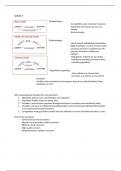Samenvatting
Summary articles - Healthcare Purchasing and Supply Chains
- Instelling
- Rijksuniversiteit Groningen (RuG)
All the articles of the course Healthcare Purchasing and Supply Chains: Greer and Klasa, Böhm, Betcheva, Noort, Kim and Choi, de Vries, Gifford, Eijkenaar, Quentin, Kaplan, Porter and Lee, Burns, Westra, Marini, van Dijk, Stolper
[Meer zien]




